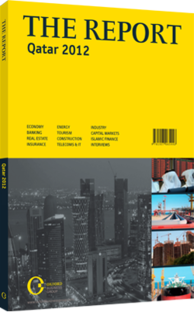OBG talks to Sheikh Abdullah Saud Al Thani, Governor, Qatar Central Bank (QCB)

Interview: Sheikh Abdullah Saud Al Thani
Given the positive economic performance in 2011, what was the strategy behind the interest cut?
SHEIKH ABDULLAH SAUD AL THANI: To support and sustain growth momentum in 2011, the QCB reduced its key policy rate – the Qatar Monetary Market Rate (QMR) for lending – by 50 basis points from 5.5% to 5.0% on April 5, 2011. It was further reduced by 50 basis points to 4.5% on August 11, 2011. The reduction was driven by the pressure of global developments and domestic considerations, including, among others, the low policy rates being pursued by several advanced economy’s central banks, providing a boost to investment spending and stimulating credit flow to the private sector.
The reduction in the QMR deposit rate by 75 basis points in 2011– from 1.5% to 0.75% – curtailed the scope of interest rate arbitrage, thereby moderating the inflow of speculative capital. In addition, it has lowered the interest burden of the QCB. The benign domestic inflation condition has given greater leeway to monetary policy, signalling a soft interest rate regime in 2011.
How would you respond to those who claim that robust economic growth has not resulted in robust lending practices?
SHEIKH ABDULLAH: Prior to the global crisis, we experienced very high growth rates in credit, especially in real estate and retail. The financial crisis led to a decline in real estate prices as well as customer confidence, hindering the growth drivers of private credit. The increased risk aversion also affected credit growth by diminishing the risk appetite of the banking sector. Even in the current unsettled global environment, credit growth in 2011 was quite healthy. Moreover, our well-provisioned non-performing loans (NPLs) are among the lowest globally. Thus it seems that banks have emerged from the crisis much stronger. With an increased role for the private sector in the National Development Strategy, credit growth should improve further, supported by proactive government policies as well as a robust regulatory and supervisory framework.
Will the new retail lending provisions aimed at improving asset quality impede growth in this segment or will institutions aim to increase volume?
SHEIKH ABDULLAH: By imposing limits on both price and quantity, the guidelines on personal loans issued in 2011 were aimed at limiting the build-up of household debt and preventing future increases in NPLs. The rationale behind these guidelines was to enable banks to continue lending to creditworthy borrowers while ensuring that individuals’ debt servicing capacity would not be impaired. Overall nominal credit growth during 2011 was around 30%. Consumption loans accounted for around one-fifth of this, suggesting the growth in consumption credit has not been unduly affected.
The global financial crisis and the ongoing eurozone crisis have led to significant deleveraging by European banks. The ratings downgrades of some European banks and the fear of another freeze in the inter-bank market has caused disruption in the lending market. Stronger Asian banks are stepping in to fill the gap. In this regard, our domestic banks are well equipped to fund the corporate sector.
The recent successful sovereign bond issuance of $5bn, despite turbulence in the global credit market, indicates greater appetite from global lenders for Qatari paper.
Does the QCB have adequate tools to confront any significant increase in inflationary pressure?
SHEIKH ABDULLAH: In the unlikely event of an acceleration in domestic inflation, the QCB could increase reserve requirements to dampen the rapid growth in credit (as in 2008), increase the QMR lending rate to signal a tightening of its monetary policy stance and use prudential controls on credit, such as reducing exposure limits. The government could also selectively introduce price controls on sensitive commodities.
You have reached the limit of premium articles you can view for free.
Choose from the options below to purchase print or digital editions of our Reports. You can also purchase a website subscription giving you unlimited access to all of our Reports online for 12 months.
If you have already purchased this Report or have a website subscription, please login to continue.

